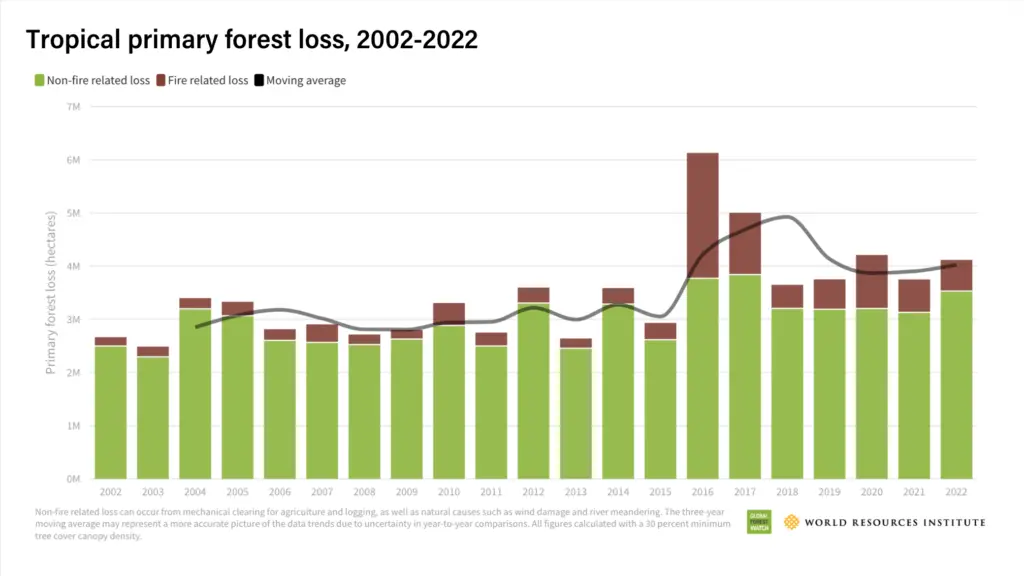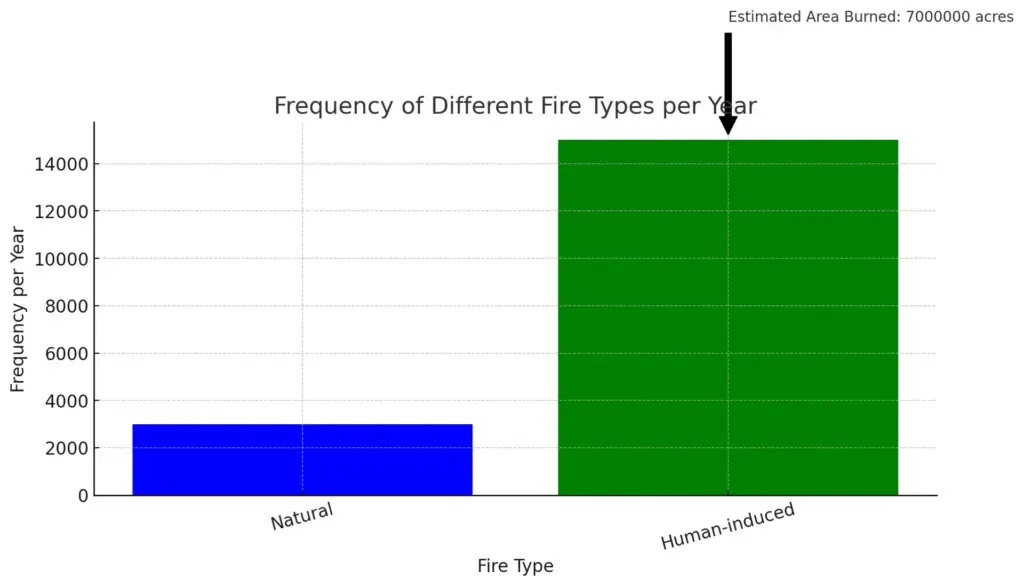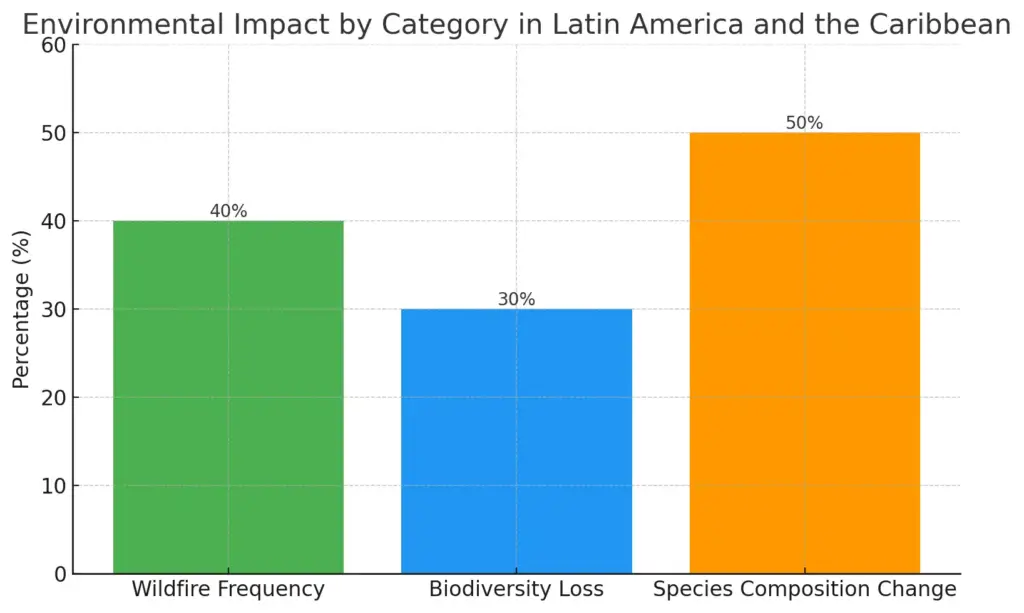Threats to Forest Ecosystems: Deforestation, Wildfires, and Logging
Table of Contents
I. Overview of Threats to Forest Ecosystems
Forests, crucial for global biodiversity and climate regulation, face a multitude of threats, primarily driven by human activity. Deforestation, often spurred by agricultural expansion, logging, and urbanization, dismantles these vital ecosystems, leading to significant habitat loss and species decline. Concurrently, wildfires, whether intentional for land clearing or unintentional sparked by climate variations, aggravate these challenges, releasing stored carbon and exacerbating greenhouse gas emissions. Moreover, unsustainable logging practices contribute to soil erosion, water cycle disruption, and the degradation of forest structure. The intersection of these threats creates a complex web of environmental challenges that not only endanger flora and fauna but also affect local communities dependent on forests for their livelihoods. An illustrative representation of these dwindling ecosystems is encapsulated in , which starkly highlights the implications of logging activities on forest health and biodiversity.
A. Major Human Activities That Degrade Forests
Human activities that significantly contribute to forest degradation encompass a myriad of destructive practices, particularly deforestation, wildfires, and logging. Each of these activities not only obliterates essential habitats but also exacerbates climate change and biodiversity loss. Deforestation is primarily driven by agricultural expansion and urban development, leading to the fragmentation of ecosystems and a decline in species diversity. Wildfires, often intensified by climate change and human negligence, represent a major threat, particularly in regions where fire has historically been uncommon, creating an urgent need for effective post-fire ecological restoration (Ferreira et al.). Logging contributes further to this degradation, reducing forest cover and altering the landscape in a manner that affects ecosystem services including carbon sequestration and water regulation (Ervin et al.). The visual depiction of logging activities in starkly illustrates the immediate impact these human endeavors have on forest ecosystems, serving to underline the precarious balance between human development and environmental sustainability.
| Activity | Impact Description | Estimated Area Lost per Year | Source |
| Deforestation | Permanent removal of forests for agriculture, urban development, or other land uses. | 10 million hectares | Food and Agriculture Organization (FAO) 2020 |
| Wildfires | Natural and human-caused fires that result in the burning of large forested areas. | 4.5 million hectares | Global Forest Watch 2021 |
| Logging | Harvesting of trees for timber, often leading to habitat destruction and fragmentation. | 3.3 billion cubic meters | World Resources Institute (WRI) 2021 |
| Agricultural Expansion | Conversion of forested land into agricultural land, contributing to habitat loss. | 13 million hectares | FAO 2019 |
| Infrastructure Development | Construction of roads, buildings, and other infrastructures that disturb forest ecosystems. | 5 million hectares | International Union for Conservation of Nature (IUCN) 2022 |
Major Human Activities Impacting Forest Ecosystems
A. Major Human Activities That Degrade Forests
Human activities that significantly contribute to forest degradation encompass a myriad of destructive practices, particularly deforestation, wildfires, and logging. Each of these activities not only obliterates essential habitats but also exacerbates climate change and biodiversity loss. Deforestation is primarily driven by agricultural expansion and urban development, leading to the fragmentation of ecosystems and a decline in species diversity. Wildfires, often intensified by climate change and human negligence, represent a major threat, particularly in regions where fire has historically been uncommon, creating an urgent need for effective post-fire ecological restoration (Ferreira et al.). Logging contributes further to this degradation, reducing forest cover and altering the landscape in a manner that affects ecosystem services including carbon sequestration and water regulation (Ervin et al.). The visual depiction of logging activities in starkly illustrates the immediate impact these human endeavors have on forest ecosystems, serving to underline the precarious balance between human development and environmental sustainability.
| Activity | Impact Description | Estimated Area Lost per Year | Source |
| Deforestation | Permanent removal of forests for agriculture, urban development, or other land uses. | 10 million hectares | Food and Agriculture Organization (FAO) 2020 |
| Wildfires | Natural and human-caused fires that result in the burning of large forested areas. | 4.5 million hectares | Global Forest Watch 2021 |
| Logging | Harvesting of trees for timber, often leading to habitat destruction and fragmentation. | 3.3 billion cubic meters | World Resources Institute (WRI) 2021 |
| Agricultural Expansion | Conversion of forested land into agricultural land, contributing to habitat loss. | 13 million hectares | FAO 2019 |
| Infrastructure Development | Construction of roads, buildings, and other infrastructures that disturb forest ecosystems. | 5 million hectares | International Union for Conservation of Nature (IUCN) 2022 |
Major Human Activities Impacting Forest Ecosystems
II. Deforestation
Deforestation is a pressing challenge characterized by the large-scale removal of forest cover, which has dire implications for biodiversity and ecosystem services. The landscape transformation driven by deforestation, often for agriculture and urbanization, disrupts habitats and contributes significantly to the ongoing biodiversity crisis. Evidence shows that intact forests provide vital ecological functions, including carbon sequestration, water provision, and the preservation of indigenous cultures, underscoring the need to prioritize their conservation (Ervin et al.). Moreover, as human activities intensify, forests face heightened vulnerabilities, leading to increased incidents of wildfires and habitat degradation (Aquilué et al.). Images depicting deforested areas, such as , vividly illustrate the stark contrast between thriving ecosystems and barren landscapes stripped of their natural resources. This visual representation serves as a powerful reminder of the urgent need for sustainable land management practices to mitigate deforestation and its far-reaching effects on global forest ecosystems.
A. Causes of deforestation: agriculture, urbanization, and infrastructure development
One of the primary drivers of deforestation includes the relentless expansion of agriculture, which compels land conversion for crop cultivation and livestock grazing. This agricultural expansion often occurs at the expense of invaluable forests, resulting in not only the loss of trees but also the degradation of entire ecosystems. A stark illustration of this impact can be seen in the alarming statistics indicating that by 2018, the Amazon had lost around 870,000 km² of its original forest cover primarily due to agricultural initiatives aimed at meeting the ever-increasing global food demand (Alencar et al.). Urbanization further exacerbates forest loss, as growing populations necessitate land for housing, sanitation, and infrastructure, which leads to extensive tree-clearing activities that replace lush landscapes with urban sprawls (Alencar et al.). Additionally, infrastructure development, highlighted by new road projects, hydroelectric dams, and other developments, opens previously inaccessible areas to exploitation, promoting further deforestation and fragmentation of forest habitats. The construction of roads, for instance, not only facilitates logging and mining activities but also provides access for settlers seeking land, thereby accelerating the degradation of forests. The interconnected effects of these factors illustrate a troubling cycle that continually undermines forest ecosystems and their associated biodiversity, as vividly captured in the visual representation of these causes. As forests continue to vanish, the ramifications extend beyond just lost trees; they threaten the survival of countless species, disrupt climatic patterns, and contribute to the increase in greenhouse gas emissions, highlighting the urgent need for sustainable land management practices that balance development with ecological preservation.
| Cause | Percentage of Deforestation (2021) | Impact on Forest Area (hectares) | Notes |
| Agriculture | 90 | 100000000 | Largest contributor to deforestation globally as forests are cleared for cropland and livestock. |
| Urbanization | 7 | 8000000 | Cities expanding into forested areas leads to habitat loss and fragmentation. |
| Infrastructure Development | 3 | 2000000 | Roads, highways, and other infrastructures contribute to direct deforestation. |
Causes of Deforestation
B. Effects on Biodiversity and Ecosystem Services
The relentless pressures of deforestation, wildfires, and logging have deleterious effects on both biodiversity and ecosystem services, severely compromising the intricate balance of forest ecosystems that have developed over millennia. As highlighted in recent studies, the decline of intact forests correlates with significant losses in biodiversity, which is essential for maintaining various ecological functions, including critical processes such as carbon sequestration, nutrient cycling, and water regulation (Ervin et al.). Furthermore, when forests are fragmented due to logging or cleared for agricultural expansion, the remaining habitats become increasingly vulnerable to invasive species and climatic changes, which further exacerbate the loss of native flora and fauna, transforming once-thriving ecosystems into barren landscapes devoid of diversity (Aquilué et al.). The implications of these changes extend well beyond ecological health; as biodiversity diminishes, so too do the ecosystem services that sustain human livelihoods, such as crop pollination, soil fertility, water purification, and flood regulation. These services not only contribute to food security but also play vital roles in maintaining the stability of our climate and the quality of our natural resources. The potential loss of these invaluable services underscores the urgent need for comprehensive management strategies that prioritize ecosystem integrity while also highlighting the interconnectedness of ecological health and human welfare. Strategies such as reforestation, sustainable logging practices, and the establishment of protected areas can play critical roles in safeguarding biodiversity. The visual representation of deforestation impacts poignantly illustrates this critical conversation, reinforcing the message of unsustainable practices and their far-reaching consequences, underscoring the necessity for immediate action to protect our planet’s vital ecosystems.
III. Wildfires
The increasing frequency and intensity of wildfires have emerged as a critical threat to forest ecosystems, exacerbated by climate change and anthropogenic activities. The devastation wrought by these fires not only obliterates vast tracts of biodiversity but also undermines the ecological functions that forests serve, such as carbon storage and water purification. As more than 4400 species globally are threatened by altered fire regimes, it is imperative to recognize the interconnectedness between fire activity and biodiversity preservation (Aquilué et al.). Deforestation practices, combined with the mismanagement of fire, can precipitate shifts in ecological balance, leading to long-term degradation of vital forest habitats (Ervin et al.). This scenario is further illustrated by the stark contrasts seen in areas before and after wildfires, which can diminish resilience and increase vulnerability to subsequent environmental challenges, thereby complicating conservation efforts and undermining sustainability goals across the globe. The image depicting the loss of tropical primary forests underscores these alarming trends, emphasizing the need for comprehensive fire management strategies to safeguard forest ecosystems against escalating wildfire threats.

Image: Trends in tropical primary forest loss (2002-2022) – The image presents a bar graph illustrating the loss of tropical primary forests from 2002 to 2022, differentiating between non-fire related losses (depicted in green) and fire-related losses (shown in brown). The vertical axis quantifies the primary forest loss in hectares, while the horizontal axis represents the years from 2002 to 2022. Notably, the moving average trend line, displayed as a gray curve, highlights fluctuations in forest loss over the years, emphasizing a significant spike in 2016. Data annotations indicate that non-fire related loss incorporates factors such as agricultural clearing, logging, and natural occurrences, while the interpretation of year-over-year changes may be impacted by uncertainties in data collection methodologies. This graph serves as a crucial visual representation for discussions surrounding environmental impacts and deforestation trends in tropical regions.
A. Natural vs. human-induced wildfires: causes and frequency
Natural wildfires and human-induced fires are critical factors affecting forest ecosystems, and understanding their distinct causes and frequencies is essential for effective management. Natural fires often occur due to lightning strikes and climatic conditions, contributing to ecological processes such as seed germination and nutrient cycling. Conversely, human-induced wildfires, frequently exacerbated by land-use changes, agricultural practices, and negligence, have surged in frequency, particularly in regions like Brazil where environmental policies have historically been insufficient (Berlinck et al.). The destruction from these fires accounts for significant forest degradation in various ecosystems, creating urgent calls for ecological restoration (Ferreira et al.). Assessing the implications of both fire types reveals a complex interplay between natural mechanisms and anthropogenic activities, highlighting the necessity for targeted management strategies that mitigate human impact while recognizing the role of fire in forest health. This dual perspective is crucial for sustaining forest ecosystems amidst ongoing threats.

The chart illustrates the frequency of different types of fires per year, highlighting the stark contrast between natural and human-induced fires. Natural fires occur approximately 3,000 times annually, while human-induced fires have a significantly higher frequency of around 15,000 occurrences. Additionally, an annotation notes the estimated area burned by combined fire types, amounting to 7,000,000 acres.
B. Long-Term Effects of Wildfires on Forest Recovery
The long-term effects of wildfires on forest recovery are profound, shaping both ecological dynamics and management practices. Wildfires devastate landscapes, often leading to significant losses in biodiversity and alterations in species composition, which can hinder natural recovery processes. The restoration of forests post-wildfire is increasingly viewed as crucial, particularly in regions like Latin America and the Caribbean, where efforts to restore degraded ecosystems have grown significantly (cite15). In Brazil, the recent surge in wildfires highlights the urgent need for effective management strategies, addressing not only the immediate consequences but also the societal and ecological implications that follow (cite16). These dynamics underscore the complexity of forest recovery, requiring adaptive strategies that consider various biophysical and socio-economic factors, leading to a dual focus on ecological restoration and community engagement. Ultimately, understanding these long-term effects is essential for enhancing forest resilience and developing sustainable management practices against the backdrop of increasing wildfire incidents.

The chart illustrates the environmental impact in Latin America and the Caribbean by displaying the percentage of wildfire frequency, biodiversity loss, and species composition change. Wildfire frequency stands at 40%, biodiversity loss at 30%, and species composition change at 50%.
IV. Unsustainable Logging Practices
Unsustainable logging practices significantly threaten forest ecosystems, primarily through illegal activities and a lack of regulatory enforcement. These practices contribute to the degradation of vital species, such as Pterocarpus erinaceus in The Gambia, where illegal logging has led to a suspension of its trade by CITES, as reported in (Sanneh et al.). This scenario exemplifies the broader consequences of unregulated logging, which not only diminishes biodiversity but also disrupts the essential ecosystem services forests provide. Furthermore, factors like overgrazing and drought exacerbate the impact, necessitating interventions such as Assisted Natural Regeneration (ANR) to restore affected areas. The alarming visual of logging operations juxtaposed with deforested landscapes, captured in , vividly illustrates the transformation of thriving ecosystems into barren lands, thereby underscoring the urgent need for sustainable forestry practices to avert further ecological decline and support resilient forest management strategies in the face of climate change and human development (Volpi G).
A. Types of logging: clear-cutting, selective logging, and illegal logging
The various types of logging—clear-cutting, selective logging, and illegal logging—represent critical threats to forest ecosystems, each exerting profound impacts on biodiversity and sustainability. Clear-cutting, a method that typically results in total forest removal, severely disrupts habitats and alters the landscape, leading to long-term ecological consequences. In contrast, selective logging has been posited as a more sustainable option, yet studies reveal that even this practice can undermine forest health; for instance, it has been found that logging beyond the first-cut can lead to declines in tree species and biodiversity, suggesting a trajectory toward economic extinction of commercially valuable timber species (Richardson et al.). Meanwhile, illegal logging exacerbates environmental degradation by bypassing regulations designed to protect forest resources, leading to rampant deforestation. Illustrating these dynamics, poignantly captures the aftermath of logging practices, presenting a stark visual of the devastation wrought on forested lands. The need for effective management strategies to balance economic interests and conservation remains urgent.
| Type | Definition | Impact | AreaAffectedAcres | CarbonEmissionMetricTons | Source |
| Clear-Cutting | Removal of all trees in a designated area. | Leads to significant habitat loss and soil erosion. | 35000000 | 130000000 | Food and Agriculture Organization (FAO), 2022 |
| Selective Logging | Removal of specific trees while maintaining the forest structure. | Minimizes damage to surrounding trees and soil. | 8000000 | 30000000 | World Bank, 2023 |
| Illegal Logging | Harvesting trees without permission or contrary to regulations. | Causes biodiversity loss and undermines legal forestry practices. | 40000000 | 150000000 | Global Forest Watch, 2023 |
Types of Logging and Their Impact
B. Logging and Soil Erosion in Forests
The relationship between logging practices and soil erosion in forest ecosystems is complex and deeply concerning. Logging often leads to the removal of tree roots that stabilize the soil, increasing vulnerability to erosion. This destabilization manifests in various ways, such as enhanced runoff and sedimentation in waterways, which can negatively affect aquatic ecosystems and water quality. Notably, regions where logging is prevalent experience higher rates of soil degradation, a process exacerbated by excessive rainfall and poorly managed practices. Moreover, the effects of logging are compounded by climate change, which can disrupt traditional forest rehabilitation methods, further intensifying soil loss (Volpi G). Importantly, effective management practices, including selective logging and reforestation efforts, are crucial in mitigating erosion risks, as they aim to preserve soil integrity while balancing economic needs. The stark realities of logging-induced erosion are vividly illustrated by , which displays the harsh aftermath of deforestation and its impact on the land.
V. Mitigation and Conservation Efforts
Mitigation and conservation efforts are critical in addressing the dire threats faced by forest ecosystems due to deforestation, wildfires, and logging. A multifaceted approach is necessary, encompassing the promotion of sustainable agricultural practices, the enforcement of legal frameworks to curb illegal logging, and the adoption of effective land-use strategies that align with ecological principles. For instance, transitioning from unregulated oil palm expansion to sustainable production methods could significantly reduce carbon emissions and restore the natural carbon sequestration capabilities of tropical forests, as highlighted by significant findings in recent studies (Booth et al.). Furthermore, community engagement in conservation efforts, fostering local stewardship of forest resources, is vital for enhancing resilience to climate change (Volpi G). The urgency of these initiatives is starkly illustrated by , showing the correlation between biodiversity conservation and human livelihoods, thus underlining the interconnectedness of ecosystem health and community well-being.
A. Policies and Laws to Protect Forests
Effective policies and laws play a crucial role in safeguarding forest ecosystems from the multifaceted threats of deforestation, wildfires, and logging. Recent shifts in environmental policies, particularly within Brazil under President Jair Bolsonaros administration, illustrate how legislation can significantly impact forest conservation efforts. For instance, there has been a marked increase in deforestation rates due to weakened protections and regulatory oversights, demonstrating the vulnerability of forests to policy changes (Jaques S et al.). Moreover, holistic approaches that integrate local governance, sustainable land management, and community involvement are essential for mitigating adverse effects on biodiversity and promoting reforestation (Volpi G). Policy frameworks must prioritize the protection of forests, utilizing data-driven insights to address immediate threats effectively. The stark contrast depicted in , which illustrates the vulnerability of tropical forests to climate change and deforestation, emphasizes the imperative for robust legislative action to ensure the resilience of these ecosystems.
| Policy Name | Country | Year Implemented | Immediate Impact (Hectares of Forest Protected) | Reduction in Deforestation Rate (%) |
| Emissions Reduction Fund (ERF) | Australia | 2014 | 250000 | 10 |
| Forest Stewardship Council (FSC) Certification | Global | 1993 | 22000000 | 25 |
| National Forest Protection Program | United States | 2018 | 500000 | 15 |
| Reducing Emissions from Deforestation and Forest Degradation (REDD+) | Multiple (UN initiative) | 2010 | 3000000 | 20 |
| Biodiversity Conservation Act | India | 2002 | 150000 | 12 |
Forest Protection Policies and Their Impact (2020-2023)
B. The Role of Non-Governmental Organizations (NGOs)
Non-Governmental Organizations (NGOs) play a critical role in addressing the various threats to forest ecosystems, such as deforestation, wildfires, and logging. By acting as advocates for environmental preservation, NGOs mobilize grassroots movements that raise awareness about sustainable practices, thereby fostering community involvement in conservation efforts. These organizations often focus on educating local populations, creating programs that promote an understanding of the ecological benefits of maintaining forest health, which can translate into long-lasting community support for conservation efforts. For example, many NGOs engage with communities through workshops, seminars, and hands-on projects, empowering residents to take an active role in protecting their natural resources. Additionally, NGOs frequently collaborate with governmental bodies to implement robust policies aimed at reducing illegal logging and mitigating fire risks that threaten the integrity of forests. Their efforts extend to lobbying for better legislative frameworks that support sustainable forest management practices. Furthermore, NGOs invest time and resources into monitoring and assessing forest conditions, utilizing analytical tools and technology, such as satellite imagery and on-the-ground assessments, to track changes over time. Examples of these technologies include images of logging sites that showcase the impact of human intervention on natural landscapes, which underscore the urgent need for action and highlight the critical importance of these ecosystems. Consequently, NGOs are indispensable in the quest to sustain forest ecosystems and combat their degradation, serving as vital agents of change in the global effort to protect our environment for future generations.
| NGO | Total Projects | Countries Operated | Area Conserved (hectares) | Year Established |
| World Wildlife Fund (WWF) | 300 | 40 | 1500000 | 1961 |
| Greenpeace | 150 | 55 | 2000000 | 1971 |
| The Nature Conservancy | 1200 | 72 | 40000000 | 1951 |
| Rainforest Alliance | 80 | 30 | 800000 | 1987 |
| Forest Stewardship Council (FSC) | 500 | 80 | 32000000 | 1993 |
NGO Impact on Forest Ecosystems
REFERENCES
- Sanneh, Omar. “Assessing natural regeneration of Pterocarpus erinaceus in Kiang West National Park, The Gambia”. Universidad Internacional de Andalucia, 2023, https://core.ac.uk/download/588381669.pdf
- Giulio Volpi. “Climate Mitigation, Deforestation and Human Development in Brazil”. 2025, https://core.ac.uk/download/pdf/6248739.pdf
- Ervin, J, Evans, T, Filardi, C, Grantham, et al.. “The exceptional value of intact forest ecosystems”. ‘Springer Science and Business Media LLC’, 2018, https://core.ac.uk/download/153533561.pdf
- Aquilué, Núria, Archibald, Sally, Batllori, Enric, Bennett, et al.. “Fire and biodiversity in the Anthropocene”. ‘American Association for the Advancement of Science (AAAS)’, 2020, https://core.ac.uk/download/360854600.pdf
- Silva Jaques, Iara. “Policy Changes Impact in Deforestation of the Brazilian Amazon”. USF Scholarship: a digital repository @ Gleeson Library | Geschke Center, 2020, https://core.ac.uk/download/386793526.pdf
- Ferreira, António, García, Rafael A., Merino García, Agustín, Pauchard, et al.. “Post-fire ecological restoration in Latin American forest ecosystems: insights and lessons from the last two decades”. ‘Elsevier BV’, 2022, https://core.ac.uk/download/491657261.pdf
- Cervera Zaragoza, Teresa, Marull, Joan, Padró i Caminal, Roc, Pino i Vilalta, et al.. “Understanding the long-term dynamics of forest transition: Fromdeforestation to afforestation in a Mediterranean landscape (Catalonia, 1868-2005)”. ‘Elsevier BV’, 2018, https://core.ac.uk/download/211863646.pdf
- Barbosa, Elaine Cristina Cambuí, Figueiredo, Raiânnata Machado, Lobão, Jocimara Souza Britto, Rocha, et al.. “A bibliometric analysis on the effects of land use change on fire dynamics: current status and progress”. Brazilian Journals Publicações de Periódicos e Editora Ltda., 2024, https://core.ac.uk/download/630937817.pdf
- Booth, Savanna L. “The Relationship between Carbon Emissions, Land Use Change and the Oil Palm Industry within Southeast Asia”. USF Scholarship: a digital repository @ Gleeson Library | Geschke Center, 2017, https://core.ac.uk/download/216984279.pdf
- Richardson, Vanessa Anne. “The economic and ecological sustainability of the Amazonian timber industry”. 2015, https://core.ac.uk/download/41994899.pdf
- Anthony, S. Curry, Anthony, S. Curry. “THREATS TO GOLDEN-FLOWERED CAMELLIAS ALONG HON GIAO PASS”. Dalat University (Trường Đại học Đà Lạt), 2022, https://core.ac.uk/download/590883845.pdf
- Alencar, Ane, Almeida, Claudio, Aragão, Luiz E O, Armenteras, et al.. “Chapter 19: Drivers and Ecological Impacts of Deforestation and Forest Degradation”. United Nations Sustainable Development Solutions Network, New York, USA, 2021, https://core.ac.uk/download/491157256.pdf
- Berlinck, Christian Niel, Christianini, Alexander V., Marengo, José A., Melo, et al.. “Understanding Brazil’s catastrophic fires : causes, consequences and policy needed to prevent future tragedies”. 2021, https://core.ac.uk/download/553016448.pdf
- SETYAWAN, AHMAD DWI. “Review: Biodiversity conservation strategy in a native perspective; case study of shifting cultivation at the Dayaks of Kalimantan”. 2010, https://core.ac.uk/download/12345898.pdf
Image References:
- “Trends in tropical primary forest loss (2002-2022).” imgs.mongabay.com, 25 January 2025, https://imgs.mongabay.com/wp-content/uploads/sites/20/2023/06/27082214/public___gfr_2023-06_gfr1c_tropical-primary-forest-loss-2002-2022.png
